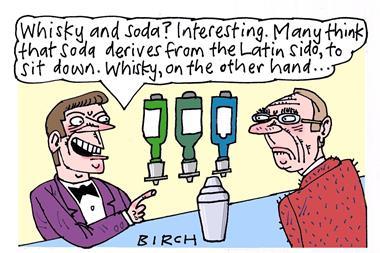The wrong terminology for antimicrobial resistance, and which scientist belongs on a tea towel
Tea towel teaser
The letter from Clifford Jones about Dorothy Hodgkin and her birth in Cairo (Chemistry World, March 2017, p5) reminded me of a puzzle I hope readers can solve.

A decade ago, I produced a tea towel about British science pioneers. For each person selected, the space available meant that I could only include their dates of birth (and, if appropriate, death), six words and a simple diagram that somehow depicted their work.
Birth in Great Britain was the sole criterion for inclusion as the image was placed at the person’s birthplace, but I set myself additional rules. I wanted to include at least one woman, and at least one person for each of the home countries. Finally, I wished to avoid two people responsible for the same work.
Dorothy Hodgkin did not satisfy the birthplace condition, and the inclusion of Francis Crick prevented the inclusion of Rosalind Franklin. Which woman would you suggest should go on any future tea towels? And, while there are many science pioneers from England and Scotland, who would you suggest to represent Wales? Your ideas, please.
Gordon Woods CChem FRSC
Oakham, UK
Endothermic error
Doubtless many readers noticed the mistake in the latest issue (Chemistry World, March 2017, p32), where it was stated that adding hydrogen to dinitrogen is endothermic. It is in fact exothermic, as seen in the enthalpy of formation of ammonia (ΔfHo = –46kJ/mol). The small magnitude of this enthalpy change does, however, raise the prospect of ammonia being used as a clean energy store (it releases nitrogen and water when burned in air or when consumed in a solid oxide fuel cell).
The vast industrial infrastructure that already exists to deal with ammonia could be used and expanded upon. The ease of storing ammonia (liquid at room temperature and 10 bar) and its favourable energy density (3500–4250Wh/kg) compared with lithium-ion batteries (up to 680Wh/l) mean it should be seriously considered for longer-term (eg inter-seasonal) energy storage.
The accompanying editorial suggested that we needed an alternative to the Haber–Bosch process for making ammonia, but this is already very efficient after a century of optimisation. If an efficient method of producing ammonia electrochemically could be found, however, then that would raise the prospect of using renewable, intermittent power sources (wind and solar) for ammonia synthesis. This would be valuable for fertiliser production alone – but if one considers ammonia as an energy store, the possibilities are very exciting indeed.
Thomas Wood, AMRSC
Abingdon, UK
Editor: Thanks for pointing out our error.
Resistance is futile
In the current – and continuing – furore over antimicrobial resistance, expert after expert is wheeled out to pronounce on the problem and much learned discussion is available via both the broadcast and print media. References are usually made to the end of the ‘antibiotic era’ and the place of honour due to Alexander Fleming and his discovery of penicillin.
It says much about the parlous state of science in the field of anti-infectives that so many errors are allowed to pass unchallenged, particularly when this includes chemistry journals. It is regularly forgotten that the breakthrough drug in the field was sulfanilamide, following IG Farben’s belated release of the azo dye Prontosil in 1935. It was not the β-lactams, and never penicillin – which includes penicillin G and penicillin V, but for which a single molecular structure does not exist.
The word antibiotic is also troublesome, since the original meaning only covers natural product drug molecules extracted from microorganisms, often actinobacteria. Penicillins G and V are therefore antibiotics, but the sulfonamides are not. Furthermore, there are examples of tumour ‘antibiotics’, such as dactinomycin and doxorubicin (both from Streptomyces spp.).
This may seem a rather pernickety, but it is for a good reason. For example, in forums discussing antimicrobial resistance, the term ‘penicillin resistance’ is often used. But what does it mean? Is this resistance to all penicillins, or just one class? If it is all penicillins, this will probably also include cephalosporins, but that isn’t obvious from the description. It is even worse when a bacterial strain is described as being antibiotic resistant.
Without accurate description, science is not understandable. When it is important science – and this certainly covers antimicrobial resistance – it can be counterproductive and dangerous.
Mark Wainwright FRSC
Preston, UK
Editor: Prontosil’s place in history is probably overshadowed due to the Nazi regime insisting Gerhard Domagk could not collect his 1939 Nobel prize. With medicine drug terminology is always tricky – after all, sufanilamide is related to the loop diuretic furosemide. If you have any suggestions, let us know.












1 Reader's comment